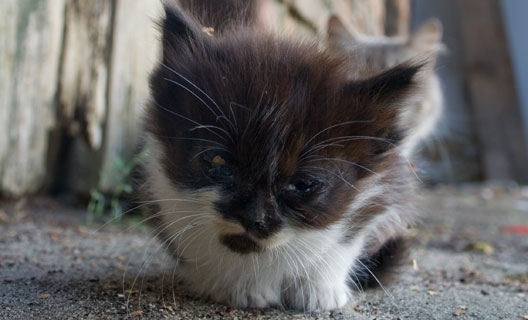Emergency Vet Clinic in Brampton, Highway 10
Lost, Stray & Community Cats: How To Make A Difference
 Wild and homeless domesticated cats are not a new phenomenon, but an issue that affects towns and cities everywhere. A nuisance than a growing problem, homeless cats can sometimes be demonised for their activities in gardens and their caterwauling. Many of these cats, however, can be quite friendly and welcome human interaction. These are the ones that have seemingly identified you and your home as a source of care and safety. and are perhaps even brave enough to approach you.
Wild and homeless domesticated cats are not a new phenomenon, but an issue that affects towns and cities everywhere. A nuisance than a growing problem, homeless cats can sometimes be demonised for their activities in gardens and their caterwauling. Many of these cats, however, can be quite friendly and welcome human interaction. These are the ones that have seemingly identified you and your home as a source of care and safety. and are perhaps even brave enough to approach you.
So what does one do if a homeless cat shows an interest in forming a relationship?
The answer really depends on capacity, one’s capacity for caring for another animal and the capacity of one’s home and finances to include another dependent. Keep in mind that there are several ways that one can help.
Lost Cats
Helping them find a way home
Not all cats that roam are homeless. In many cases they might be given outdoor privileges or some find their way outside and just get lost, unable to find their way back home. Domesticated cats are not the wild beasts of thousands of years ago; to a pampered cat from a loving household the prospect of not being able to find their home again is not only frightening but also a serious threat to their survival.
If an unknown cat approaches you that shows signs of being a housecat, such as a collar or appears well groomed, there is a good chance that the cat may already have a home and it needs your help.
Many domesticated cats now have microchip identification as well, your local veterinarian can help you identify their homes. Contacting all local vets and humane societies to inform them of the pet and description that you’re minding can also help the pet’s owners to find their lost cat again.
If there is no identifying information on a cat that arrives on your doorstep, you do still have choices that ensure that the cat is cared for and that the stray cat population is managed humanely.
Can't Find An Owner? You Still Have Options.
Welcome Home
If the cat is friendly, let it know that it is safe and welcome at your house. This can involve leaving food or even inviting the cat into your home as a pet. How feasible these options are to you is entirely dependent on your own situation and whether the cat is willing to trust you.
If you do begin to feed a stray or community cat, keep in mind that the cat may come to rely on you for its welbeing. Particularly during climate extremes, you should be prepared to offer shelter as well. In the case of strays, the goal should always be to help them find a permanent home and family to care for them.
Humane Societies
Asking the Humane Society or Animal Control to take responsibility of a cat should not be your first call, they should be your last resort. The majority of animal shelters do not have room for more cats, which means that cats that go to shelters often end up being euthanised if not adopted soon. The Humane Society can, however, be a valuable resource toward responsible pet ownership and adoption.
Trap-Neuter-Release Programs
Not all homeless cats, particularly feral cats that have never much interaction with humans before, might be suitable to bring into a home. Kittens from cat colonies can often be socialised and given a home but this is frequently not the case with adult felines. There are, however, measures that can be taken to help control this population in a humane way.
What many communities and animal welfare organisations are doing now are Trap-Neuter-Release programs, which ensure that these feral cats are examined by a veterinarian, neutered or spayed, and then brought back to their colony where they can continue to live but are unable to reproduce and increase the wild domestic cat population.
These programs require support from local residents, property owners and organisations to ensure the ongoing care and monitoring of these cat colonies.
For more information about Trap-Neuter-Release programs, visit http://www.animalalliance.ca/campaigns/stray-feral-cats.html or talk to your veterinarian or humane society today.